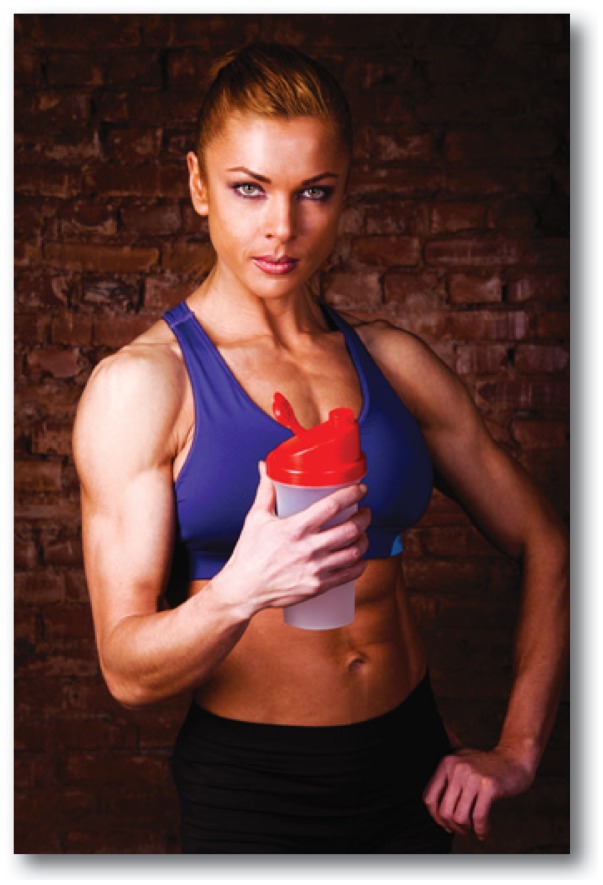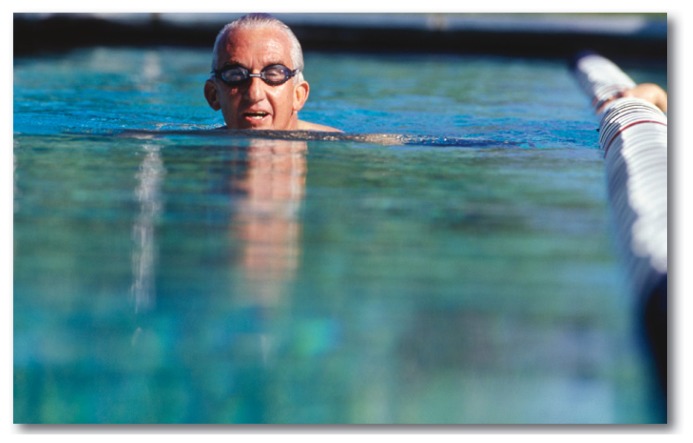Introduction
Patients often come to the physician’s office seeking advice about whether or not to use supplements to augment athletic performance. Certain ergogenic aids such as anabolic steroids and human growth hormone have been shown to improve athletic performance but have significant associated morbidity and possible mortality.1 These substance are illegal to use for performance enhancement and therefore it is easy to recommend against usage. However, there remains a large amount of controversy and confusion about the use of other easily available, legal dietary supplements.
Supplementation
Sports supplementation is any dietary manipulation in an attempt to enhance athletic performance. The use of dietary manipulation dates back to Greek Olympians who ate large amounts of meat, dried figs, mushrooms, and strychnine to try to improve performance.2 Starting in the 1900s dietary manipulation and sports supplementation grew. Today sports supplementation is big business. In 2013, the global sports nutrition market was worth almost 22 million dollars and the general supplement market reached into the billions.3
Elite athletes are not the only ones using supplements to edge out the competition. Students in high school and even younger are looking to supplements to gain any possible advantage. In 2012, a study of 2800 students, average age of 14 years, revealed that 35% had used a supplement.4 Nationally, that equates to over 9 million adolescents. Statistics for college athletes using supplements is even higher. A 2004 study of Division I athletes showed 37% used creatine, 61% used calorie replacements and 73% consumed energy drinks.5 Supplement use continues and may even increase as the population ages. A survey of masters athletes revealed 60% used nutritional supplementation at the World Masters Athletics Indoor Championships in 2004.6 Education for the medical provider regarding supplements is critical. It is not always clear which sports supplements may help augment athletic performance and what side effects need to be monitored.
A 16-year-old high school soccer player comes into the office with his mom and she is concerned about her child’s diet. She states, “My child doesn’t eat well. Will taking a dietary supplement help his performance?”
Everyone needs a balanced diet and this is even more important for athletes. No supplement will correct for a poor diet. Supplements are meant to provide nutrients they are not complete food sources. Athletes with poor nutritional habits will not reach full potential. Adequate nutrients are important for tissue growth and repair which is required for athletes to have full recovery between practices and competitions.7 Athletic activity requires high metabolic rates for extended periods of time and adequate nutrients are required to keep athletes performing at the highest level. It is also important to remember that dietary habits are learned at a young age and carried into adulthood. Talking to young patients about diet and especially focusing on how poor nutrition will negatively affect athletic performance can be a powerful motivator for young athletes.
Everyone would like to find a magic pill that would improve athletic performance with no side effects or unfair advantages, but there is no known food or supplement will allow an average athlete to become an elite athlete. If certain elements are missing from the diet. A multi-vitamin may be recommended, however vitamins in a product should not exceed 500% of the Daily Value (DV) and minerals should not exceed 100% of the DV.8
A 25-year-old body builder who competes in local and statewide competitions comes in with a bottle he picked up at the local drug store. He tells you, “I got this supplement at the store and it lists the ingredients, so I know exactly what I am taking.”
The regulation of nutritional supplements in the United States changed in 1994 when Congress passed the Dietary Supplement Health and Education Act (DSHEA).9 It defined dietary supplements as food and not drugs, therefore the Food and Drug Administration does not need to approve any product before it is produced or sold. Manufacturers are required to analyze the identity, purity, and strength of the supplement, but they are not required to demonstrate safety or efficacy. Common impurities found in supplements include pharmaceuticals, heavy metals, microbiological contamination and pesticides. Contamination with banned substances can also occur. The International Olympic Committee (IOC) Medical Commission analyzed 634 nutritional supplements from 215 suppliers and 18.8% of the supplements purchased in the United States contained non-labeled prohormone substances (precursors to anabolic steroids) at varying levels that could lead to a positive drug test.10
Logos to look for on products having undergone additional testing include United States Pharmacopeia (USP), National Sanitation Foundation (NSF International), and Natural Products Association (NPA).
In an attempted to improve quality in 2007, the FDA passed a rule on Good Manufacturing Practices for dietary supplements.11 The goal was to ensure that products were made in a consistent, quality manner and were accurately labeled and free from impurities. However, the rule is hard to enforce and impurities are still found. Some manufacturers use third-party inspection to show they have passed independent quality testing. Logos to look for on products having undergone additional testing include United States Pharmacopeia (USP), National Sanitation Foundation (NSF International), and Natural Products Association (NPA).
A 32-year-old business professional who is an avid cyclist is seeing you for his annual physical. Overall he feels that he is pretty healthy. He wants to raise his cycling to the next level and wants to know in addition to training what could help improve his times.
It is important to be able to talk to patients about supplements that have known ergogenic or performance enhancing effects. Some of the most commonly used legal supplements that performed as claimed are creatine, caffeine, sports drinks, gels, bars, and protein supplements.12
Creatine is likely the most widely use ergogenic aid to build muscle and enhance recovery. Oral creatine supplementation works by increasing the available phosphocreatine body stores and causing muscle cell hypertrophy.13 Supplementation is more effective for high intensity sports with repeated short bursts of activity, such as sprinting and weight-lifting. 14 Benefit has not been shown in longer duration activity such as running and swimming. Commonly used doses include loading with 5 grams four times per day then taking 2 grams daily for three months.15 Drinking enough water, 6–8 glasses per day, is extremely important when taking additional creatine.
Creatine supplementation is generally considered safe in healthy adults. Thirty percent of people who take creatine will not respond at all with the supplement due to already maximized phosphocreatine stores.16 Contamination of the product with other supplements is frequently seen. The most common adverse effects are weight gain, gastrointestinal discomfort, and muscle cramps.17 There have been case reports of renal function compromise and permanent kidney damage.18 The daily requirement of creatine is 2 grams. A good way for individuals to maximize the benefits of creatine is to get higher dosages in real foods, rather than supplements. For example, creatine content in is 1.1 grams in 8 ounces of pork, 1 gram in 8 ounces of salmon or beef, and 0.7 grams in 8 ounces of cod.8
Caffeine is the most widely used stimulant in the world. Caffeine is quickly absorbed and peak levels are reached 1–2 hours after consumption. Caffeine has been shown to increase aerobic endurance and possible increase strength, improve reaction time, and delay fatigue.19 It works as a central nervous system stimulant and leads to decreased perception of effort. In the laboratory setting in high level adult athletes who took 3–9 mg/kg of caffeine prior to exercise increased performance during prolonged endurance exercise and short-term intense exercise lasting five minutes.20
Caffeine is a legal supplement, but the NCAA and IOC prohibit urinary concentrations above 15ug/mL and 12ug/mL, respectively. When used in moderation adverse effects are low, but include anxiety, feeling jittery, increased hear rate, gastrointestinal distress, and insomnia.19 It is not recommended to use caffeine in combination with other stimulants. Caffeine is commonly used by young athletes as a way to help athletic performance and is often thought to be a possible gateway ergogenic supplement.
Sports drinks, gels, and bars are frequently used during athletic endeavors to help enhance performance. They tend to be easier to transport and digest than other food options. Sports drinks should contain carbohydrates and glucose. The glucose can help to stimulate sodium and water absorption in the intestines. Usage is recommended in activities lasting greater than one hour. They can help to replace electrolytes and nutrients lost through sweating. Sports bars often are high in carbohydrates and contain less protein. Sports gels, chews, and beans frequently include carbohydrates, glucose, and possibly caffeine.
Sports drinks, gels, and bars are frequently used during athletic endeavors to help enhance performance.
These supplements are not meant to be meal replacements and sports drinks should not be consumed in place of water or milk at meals. Obesity is a growing problem especially among young children and these drinks can be a source of unnecessary calories. Unless performing high level sports for prolonged periods of time, sports drinks are not required for fluid replacement, because water is sufficient. In addition, studies have shown increases in dental erosion in adolescents consuming these drinks.21
Energy drinks may be easily confused with sports drinks. Energy drinks contain extremely high levels of caffeine and other stimulants and consumption can lead to dependence and addiction. In addition, energy drinks may or may not have the required amount of carbohydrates recommended for athletes. The American Academy of Pediatrics does not recommend use in anyone less than 18-years-old.22
Protein supplements and amino acid supplements may help athletes gain lean body mass. However, they are no more or less effective than food when energy intake is sufficient.12 Strength and endurance athletes need 1.2–1.7 grams of protein per kilogram of body weight or 0.5–0.8 grams per pound of body weight.23 Pre-exercise protein intake can increase the resting energy expenditure for 48 hours after the activity, increase lean muscle mass, and reduce fat mass. Post-exercise protein and carbohydrate intake within one hour of activity does lead to skeletal muscle hypertrophy. Low fat milk is a good recovery drink for athletes. Whey protein is frequently used due to rapid absorption and high concentration of amino acids. Any athlete using protein powders or amino acid supplements needs to be aware of the risk of unlisted ingredients and contamination.
A 19-year-old female comes in complaining of fatigue. She runs for stress relief and likes to compete in local races. She runs 5–6 miles most days of the week, does strength training and practices yoga regularly. She doesn’t complain of any pain. She reports eating a well-balanced diet, and is at a healthy, stable weight. Her menses are regular every 30 days and not particularly heavy. She tells you that her running magazine states iron and ferritin levels can be important for runners. She wants to know if she should be taking an iron supplement.
In addition to checking a CBC, TSH, and BMP, there may be benefit to checking a ferritin level. Anemia and iron deficiency without anemia are common in endurance athletes. Ferritin is the main storage form of iron. Some studies have shown that treating low ferritin levels can help performance in athletes with deficiency.24 There is no evidence supporting iron supplementation in athletes with normal iron and ferritin levels. Iron overload is also a possible complication if an athlete over supplements and therefore before starting iron labs should be checked. Low ferritin levels can be adequately supplemented with ferrous sulfate or ferrous gluconate. This is an area that would benefit from further research.
You are asked to speak to student athletes at the local high school about sport supplement use. You are not sure that it is worth your time. High school athletes probably do not use supplements: they won’t remember anything you tell them, and it will not change their minds if they plan to use a supplement.
Although supplements have been used for years to improve performance there has been increasing pressure on young athletes to perform at high levels, causing some athletes to look for possible advantages through supplements. In a study of 1,103 athletes 10 to 18 years old, 5.6% admitted to taking creatine and 44% of the twelfth grade athletes reported use.25 Increasing costs of a college education push athletes to work for harder for scholarships and young athletes are modeling themselves on the behaviors of professional athletes who are advertising and endorsing growing numbers of supplements.
Studies have shown that creatine supplementation can help increase strength gains during the first six months of training in older individuals.
Speaking to groups of students athletes may not seem a like a good way to change behavior, but there have been some good studies showing benefits. A growing number of adolescents play sports. For the twenty-fifth year in a row, the number of high school students participating in sports grew with 7.8 million high school students participating in organized school sports in the 2013–2014 academic year.26 When looking at drug use by athletes two categories have changed behavior rules changes, including drug tests and education. Drug tests are now mandated by some school districts in anyone participating in extra-curricular activities, sports, and band.27 Education also makes a difference. A study of 3,000 high school football players examined different education formats.28 The experimental group had interactive classroom sessions and exercise training sessions, while the control group was given a brochure. The experimental group was more knowledgeable about steroid and drug effects, less likely to believe supplement ads, more able to reject drugs from peers, and at the end of season and on year later lower steroid and supplement use.
A patient, who is a retired lawyer, sees you heading into the gym. He just finished his swimming workout and wants to know your thoughts about taking a supplement to help increase his muscle mass in addition to weight training.
It is important to stress the need for adequate food intake, even with older patients. The American College of Sports Medicine guidelines for pre-and post-activity fluid and carbohydrate replacement should be followed by all active individuals.12 Additionally, studies have shown that creatine supplementation can help increase strength gains during the first six months of training in older individuals.23
Conclusion
Sports supplements should be used to augment not replace any food in the diet. Just because something is “natural” does not mean it is safe. Supplements often lack purity. What you see on the label is not always what you get in the bottle. It is important to remember that sports supplements are big business for many corporations and can cost the consumer a lot of money with little benefit; however, there are some supplements that may be beneficial for your active patients.
Biography
Margaret E Gibson, MD, CAQSM, (left), MSMA member since 2010, Jon Schultz, MD, CAQSM, (right), MSMA member since 2014, and Drew Glover, MD, CAQSM, are all Assistant Professors at University of Missouri - Kansas City, Department of Community and Family Medicine and Truman Medical Center-Lakewood.
Contact: Margaret.Gibson@tmcmed.org


Footnotes
Disclosure
None reported.
References
- 1.Pärssinen M, Kujala U, Vartiainen E, Sarna S, Seppälä T. Increased premature mortality of competitive powerlifters suspected to have used anabolic agents. Int J Sports Med. 2000;21(3):225–227. doi: 10.1055/s-2000-304. [DOI] [PubMed] [Google Scholar]
- 2.Grivetti LE, Applegate EA. From Olympia to Atlanta: a cultural-historical perspective on diet and athletic training. J Nutr. 1997;127(5 Suppl):860S–868S. doi: 10.1093/jn/127.5.860S. [DOI] [PubMed] [Google Scholar]
- 3.Global market study on sports nutrition. http://www.persistencemarketresearch.com/market-research/sports-nutrition-market.asp.
- 4.Eisenberg ME, Wall M, Neumark-Sztainer D. Muscle-enhancing behaviors among adolescent girls and boys. Pediatrics. 2012;130(6):1019–1026. doi: 10.1542/peds.2012-0095. [DOI] [PMC free article] [PubMed] [Google Scholar]
- 5.Froiland K, Koszewski W, Hingst J, Kopecky L. Nutritional supplement use among college athletes and their sources of information. Int J Sport Nutr Exerc Metab. 2004;14(1):104–120. doi: 10.1123/ijsnem.14.1.104. [DOI] [PubMed] [Google Scholar]
- 6.Striegel H, Simon P, Wurster C, Niess AM, Ulrich R. The use of nutritional supplements among master athletes. Int J Sports Med. 2006;27(3):236–241. doi: 10.1055/s-2005-865648. [DOI] [PubMed] [Google Scholar]
- 7.Beck KL, Thomson JS, Swift RJ, von Hurst PR. Role of nutrition in performance enhancement and postexercise recovery. Open Access J Sports Med. 2015;6:259–267. doi: 10.2147/OAJSM.S33605. [DOI] [PMC free article] [PubMed] [Google Scholar]
- 8.Bonci L. Supplements: help, harm, or hype? How to approach athletes. Curr Sports Med Rep. 2009;8(4):200–205. doi: 10.1249/JSR.0b013e3181ae9ae8. [DOI] [PubMed] [Google Scholar]
- 9.Dietary Supplement Health and Education Act of 1994. http://health.gov/dietsupp/ch1.htm.
- 10.Geyer H, Parr MK, Mareck U, Reinhart U, Schrader Y, Schänzer W. Analysis of non-hormonal nutritional supplements for anabolic-androgenic steroids - results of an international study. Int J Sports Med. 2004;25(2):124–129. doi: 10.1055/s-2004-819955. [DOI] [PubMed] [Google Scholar]
- 11.Good Manufactoring Practices. 2007. http://www.fda.gov/Food/GuidanceRegulation/CGMP/ucm079496.htm.
- 12.American Dietetic Association, Dietitians of Canada, American College of Sports Medicine. Rodriguez NR, Di Marco NM, Langley S. American College of Sports Medicine position stand. Nutrition and athletic performance. Med Sci Sports Exerc. 2009;41(3):709–731. doi: 10.1249/MSS.0b013e31890eb86. [DOI] [PubMed] [Google Scholar]
- 13.Volek JS, Rawson ES. Scientific basis and practical aspects of creatine supplementation for athletes. Nutrition. 2004;20(7–8):609–614. doi: 10.1016/j.nut.2004.04.014. [DOI] [PubMed] [Google Scholar]
- 14.Branch JD. Effect of creatine supplementation on body composition and performance: a meta-analysis. Int J Sport Nutr Exerc Metab. 2003;13(2):198–226. doi: 10.1123/ijsnem.13.2.198. [DOI] [PubMed] [Google Scholar]
- 15.Buford TW, Kreider RB, Stout JR, et al. International Society of Sports Nutrition position stand: creatine supplementation and exercise. J Int Soc Sports Nutr. 2007;4:6. doi: 10.1186/1550-2783-4-6. [DOI] [PMC free article] [PubMed] [Google Scholar]
- 16.Syrotuik DG, Bell GJ. Acute creatine monohydrate supplementation: a descriptive physiological profile of responders vs. nonresponders. J Strength Cond Res. 2004;18(3):610–617. doi: 10.1519/12392.1. [DOI] [PubMed] [Google Scholar]
- 17.Bizzarini E, De Angelis L. Is the use of oral creatine supplementation safe? J Sports Med Phys Fitness. 2004;44(4):411–416. [PubMed] [Google Scholar]
- 18.Taner B, Aysim O, Abdulkadir U. The effects of the recommended dose of creatine monohydrate on kidney function. NDT Plus. 2011;4(1):23–24. doi: 10.1093/ndtplus/sfq177. [DOI] [PMC free article] [PubMed] [Google Scholar]
- 19.Momaya A, Fawal M, Estes R. Performance-enhancing substances in sports: a review of the literature. Sports Med. 2015;45(4):517–531. doi: 10.1007/s40279-015-0308-9. [DOI] [PubMed] [Google Scholar]
- 20.Goldstein ER, Ziegenfuss T, Kalman D, et al. International society of sports nutrition position stand: caffeine and performance. J Int Soc Sports Nutr. 2010;7(1):5. doi: 10.1186/1550-2783-7-5. [DOI] [PMC free article] [PubMed] [Google Scholar]
- 21.Coombes JS. Sports drinks and dental erosion. Am J Dent. 2005;18(2):101–104. [PubMed] [Google Scholar]
- 22.Committee on Nutrition and the Council on Sports Medicine and Fitness. Sports drinks and energy drinks for children and adolescents: are they appropriate? Pediatrics. 2011;127(6):1182–1189. doi: 10.1542/peds.2011-0965. [DOI] [PubMed] [Google Scholar]
- 23.Tarnopolsky MA. Nutritional consideration in the aging athlete. Clin J Sport Med. 2008;18(6):531–538. doi: 10.1097/JSM.0b013e318187ac44. [DOI] [PubMed] [Google Scholar]
- 24.Hinton PS, Giordano C, Brownlie T, Haas JD. Iron supplementation improves endurance after training in iron-depleted, nonanemic women. J Appl Physiol. 2000;88(3):1103–1111. doi: 10.1152/jappl.2000.88.3.1103. [DOI] [PubMed] [Google Scholar]
- 25.Metzl JD, Small E, Levine SR, Gershel JC. Creatine use among young athletes. Pediatrics. 2001;108(2):421–425. doi: 10.1542/peds.108.2.421. [DOI] [PubMed] [Google Scholar]
- 26.High School Participation Increases for 25th Consecutive Year. https://www.nfhs.org/articles/high-school-participation-increases-for-25thconsecutive-year/
- 27.Frequently Asked Questions About Drug Testing in Schools. http://www.drugabuse.gov/related-topics/drug-testing/faq-drug-testing-in-schools#ftn1.
- 28.Goldberg L, Elliot D, Clarke GN, et al. Effects of a multidimensional anabolic steroid prevention intervention. The Adolescents Training and Learning to Avoid Steroids (ATLAS) Program. JAMA. 1996;276(19):1555–1562. [PubMed] [Google Scholar]





